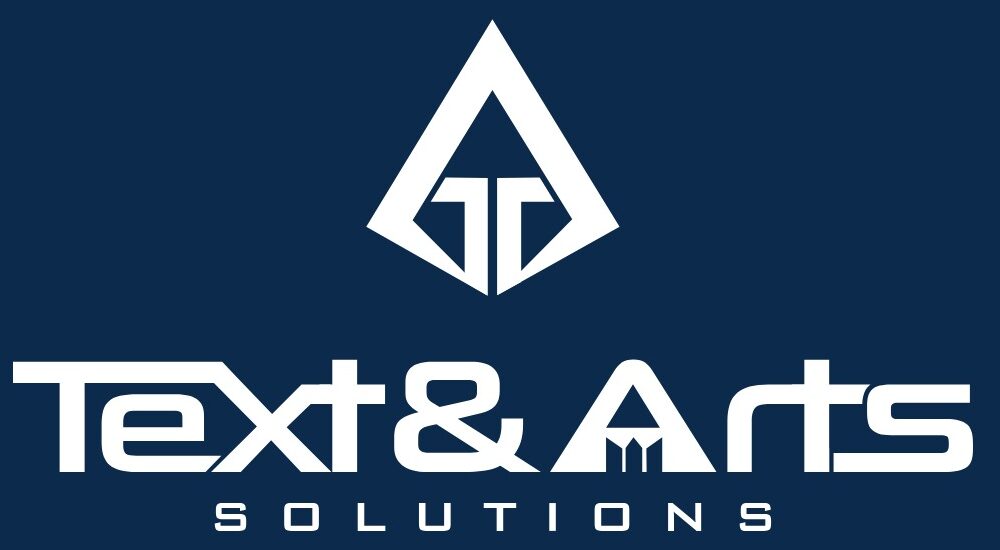Introduction
People don’t scroll past great stories—they stop for them. In a world where attention is measured in milliseconds, what actually keeps viewers watching isn’t fancy gear or lucky timing—it’s the script. The right words, structure, and pacing turn a casual scroller into a repeat viewer. That’s exactly where video scriptwriting services shine: translating ideas into retention-first stories for Reels, Shorts, and YouTube that hook fast, deliver value, and finish with a memorable payoff.
In this guide, you’ll learn the frameworks, beat sheets, examples, and workflows we use at Text & Arts Solutions to craft short-form and YouTube scripts that build watch time, followers, and conversions—without losing your brand voice.
Why Video Scriptwriting Services Keep Viewers Watching
Algorithms reward content that audiences finish and act on. A professional script is your insurance against the top reasons viewers drop off in the first 3–7 seconds:
- No immediate relevance: The opener doesn’t tell viewers “why this matters now.”
- Slow pacing: Too many warm-up lines before the value appears.
- Weak stakes: No problem, no tension, no curiosity gap.
- No visual plan: Scripts that ignore on-screen text, B-roll, or pattern breaks.
Strong video scriptwriting services solve these with three pillars:
- Hooks that match intent: Lead with a bold promise, contradiction, or quick “you vs. everyone else” comparison.
- Beat-level clarity: Every 5–7 seconds introduces a new micro-reason to keep watching (a reveal, payoff, step, or pattern shift).
- Earned CTA: The call to action feels like the logical next step after value—not a hard sell.
Bottom line: Retention is engineered on the page long before you hit record.
Proven Frameworks from Video Scriptwriting Services
5 Hook Formulas That Stop the Scroll
Use one per script; keep it under 3 seconds.
- Contradiction Hook: “You don’t need more followers to sell more. You need this one line.”
- Before–After–Bridge: “Before: 6% retention. After: 48%. Bridge: we only changed the opener.”
- One-Question Hook: “What if your next Short doubled watch time with one sentence?”
- Myth vs. Truth: “MYTH: Short videos need quick talking. TRUTH: They need quick meaning.”
- Time-Bound Payoff: “In 20 seconds, I’ll show you a script template you can steal.”
Pro tip: Write 10 hooks for every video. Pick the strongest. Save the rest for version testing.
Script Math—How Long Should You Write?
A relaxed delivery is ~135–160 words per minute (wpm). Use this baseline:
- 15 seconds (Reels/Shorts): 35–40 words
- 30 seconds (Reels/Shorts): 70–80 words
- 60 seconds (Shorts/IG): 140–160 words
- 8–10 minutes (YouTube): 1,100–1,600 words
Add visual beats (on-screen text, product shots, cutaways) directly into the script so editors aren’t guessing.
Platform-Specific Beat Sheets
Reels/Shorts (15–30s): The SNAP Formula
Say the payoff → Narrow the audience → Actual steps → Prompt the save/share.
Example (30s; ~75 words):
- Hook (0–2s): “Steal this 3-line opener to double Shorts retention.”
- Narrow (2–5s): “If you make tutorials, this is for you.”
- Steps (5–22s):
- “Start with a surprising result.”
- “Tease the cause, don’t explain it yet.”
- “Deliver the one-line solution.”
- Prompt (22–30s): “Save this for your next video. More in the caption.”
Reels/Shorts (30–60s): The 3×10 Framework
Every 10 seconds must add a new reason to stay.
- 0–10s (Hook + Stakes): “You’re losing views because your first sentence is a warm-up.”
- 10–20s (Proof in 1 line): “We swapped the opener and added 21% watch time.”
- 20–30s (Process): “Write 3 hooks, pick 1, test 2 later.”
- 30–40s (Example): “Bad: ‘Today I’ll…’ Good: ‘Stop doing X; do Y first.’”
- 40–50s (Payoff): “Plug your comparison into this template.”
- 50–60s (CTA): “Follow for more scripts; free template link in bio.”
YouTube (8–10 min): The B.O.L.T. Outline
- Big Promise: Open with the end result and tension.
- Open Loops: Tease the best story/data you’ll reveal later.
- Linear Value: Steps with mini-payoffs every 45–60 seconds.
- Transformation: Case study or story that proves change.
Segment beats:
- 0:00–0:20 – Cold open (problem + bold claim)
- 0:20–1:00 – Why it matters (stakes + path)
- 1:00–6:30 – Step-by-step with micro-stories
- 6:30–7:30 – Case study
- 7:30–9:30 – Implementation plan
- 9:30–10:00 – CTA + next video hand-off (“Watch this next…”)
Writing Techniques That Drive Watch Time
How Video Scriptwriting Services Craft Hooks That Stop the Scroll
- Lead with the difference: “Everyone says ‘post daily.’ Do this instead.”
- Use contrast words: but, instead, unless, except, without.
- Exploit specificity: “Replace your first sentence with a comparison: ‘Stop saying X; say Y.’”
- Borrow authority: “We tested 12 hooks across 60 videos; this one won.”
Hook Template Bank:
- “You’re not losing views because of editing—you’re losing them because of your first line.”
- “If your Shorts stall at 20%, here are 2 words to fix it.”
- “Don’t write intros. Write outcomes.”
Build Mid-Roll Momentum (and Kill Drop-Offs)
- Reset attention every 7–10s: new shot, graphic, question, bold claim, or mini-reveal.
- Stack curiosity: answer one question, ask a sharper one.
- Front-load value: deliver a quick win early; explain the why after.
- Use “You” more than “I”: keep it audience-centric.
Attention Reset Cues to place in the script:
- [CUTAWAY] to results screenshot
- [TEXT] “Write this line”
- [B-ROLL] 2-second demo
- [ZOOM/REFRAME] on key phrase
CTAs That Don’t Feel Pushy
- Soft CTA: “Save this template for your next script.”
- Value-Stack CTA: “Want the full checklist? It’s in the description.”
- Serial CTA: “Part 2 covers hooks for product demos—follow so you don’t miss it.”
- Directional CTA: “Watch the next video for 3 hook swaps you can use tonight.”
Rule: Place one micro-CTA after a payoff, not before it.
Real-World Patterns—Mini Case Studies
Creator Education Channel (YouTube, 8–10 min)
Problem: Average view duration ~3:20 on 9-minute tutorials.
Script Changes:
- Replaced “Welcome back…” with a cold open: “This change saved us 4 hours/week.”
- Teased a tool comparison at 0:30 and revealed it at 6:45 (open loop).
- Inserted mini payoffs every minute (a checklist item, shortcut, or example).
Result: View duration climbed to ~5:30 within 6 uploads; click-through on end cards up by ~18%.
Takeaway: A value-dense outline plus open loops extends watch time and primes the next video.
DTC Brand (Reels/Shorts, 20–35s)
Problem: Slick product reels, low retention (<20%).
Script Changes:
- Led with a problem sentence: “Your bottle leaks when you do this.”
- Showed a 1-line fix before features.
- Added save/share prompt: “Save this for your travel kit.”
Result: Retention to 40–45% on 30s clips; saves increased meaningfully; comments asked for sizes and bundles.
Takeaway: Problem-first scripting beats product-first every time.
(Numbers are illustrative of common outcomes when moving to retention-first scripting.)
From Brief to Final Draft—Our Workflow
Creative Brief Checklist
Your script is only as good as your brief. Include:
- Audience: Who are we talking to? What do they already believe?
- Outcome: What should they know/feel/do after watching?
- Core promise: One sentence.
- Proof asset: Data, demo, story, or transformation.
- Objections: What might make them bounce?
- Hook angle: Contradiction, number, myth, or time-bound promise.
- CTA: Save, follow, comment, click, or watch next.
The Script Template (Short-Form)
TITLE (internal): What the viewer gets in one line
OPEN (0–3s): Hook (specific promise/problem)
BEAT 1 (3–10s): Quick proof or quick win
BEAT 2 (10–20s): Steps or demo (2–3 moves)
BEAT 3 (20–28s): Payoff + objection buster
CTA (28–30s): Soft prompt (save/share/follow)
The Script Template (YouTube)
COLD OPEN (0–20s): Problem + promise
INTRO (20–60s): Why this matters now (stakes)
BODY (1:00–7:00): Steps with resets every 45–60s
CASE (6:30–7:30): Story/data
PLAN (7:30–9:30): Action steps + mistakes to avoid
CTA (9:30–10:00): Subscribe + watch-next bridge
Writing for Your Brand Voice (and Still Hitting Retention)
Keep It “Human-Tight”
- Short lines: One idea per sentence.
- Active verbs: “Fix,” “swap,” “steal,” “cut,” “double.”
- Concrete nouns: “Checklist,” “template,” “first sentence,” not “insights.”
- Sound-readable: Read it aloud. Cut where you run out of breath.
Visualize While You Write
In-line visual cues speed editing and improve comprehension:
- [ON-SCREEN TEXT]: the exact phrase to appear
- [B-ROLL]: what shot you need (hands typing, product close-up)
- [SFX]: pop, whoosh to mark transitions
- [CAPTION NOTE]: any keyword to include for search
Mistakes That Tank Watch Time (and Easy Fixes)
Mistake → Fix
- Vague openers → Specific payoff: “Save 2 hours/week with this line.”
- Feature dumps → Problem-first: “Stop leaks when you pack.”
- Monotone visuals → Pattern interrupts every 7–10s.
- No open loops → Tease a later reveal (tool, price, result).
- Hard CTAs upfront → Earned CTAs after a clear win.
Edit Your Script Like an Algorithm
- Trim first lines until the promise lands by second 2 or 3.
- Reward every beat with micro-value.
- Cut summarizing phrases (“basically,” “in this video”).
- Front-load the “aha.” Explain the why later.
Examples You Can Steal (Swipe These)
30-Second Short—Tutorial
- Hook: “Your first sentence is killing your views. Replace it with this.”
- Beat 1: “Start with the result: ‘This doubled my retention overnight.’”
- Beat 2: “Tease the cause: ‘Not editing—just this first line.’”
- Beat 3: “Deliver it: ‘Stop saying “Today I’ll show you…” Say “If you do X, you’ll get Y—here’s how.”’”
- CTA: “Save this for your next upload.”
60-Second Short—Product
- Hook: “This bottle fails the suitcase test. Here’s the 5-second fix.”
- Proof: Quick demo of the leak.
- Steps: “Twist, lock, press. Now shake.”
- Payoff: Dry tissue shot.
- CTA: “Follow for more quick fixes. Link in bio for specs.”
8-Minute YouTube—Education
- Cold Open: “You’re scripting backwards. Start with the last sentence first.”
- Outline: Outcome → Obstacles → 3 Fixes → Case → Action Plan.
- CTA: “Grab the script template in the description and watch our hook video next.”
(CTA): Scale with Text & Arts Solutions’ Video Scriptwriting Services
If you’re ready to turn ideas into retention, our video scriptwriting services at Text & Arts Solutions give you a complete, repeatable system—not just a draft.
What you get:
- Audience-first brief & angle map (what they care about now)
- Hook bank (10 hooks per video with testing notes)
- Beat-by-beat scripts for Reels, Shorts, and YouTube
- In-line visual cues for editors and designers
- Caption copy & titles optimized for search and clicks
- CTA ladder (soft → value-stack → directional)
- Series planning (content pillars, episodes, watch-next bridges)
Optional add-ons: Localization (Hindi/English/Other languages), subtitles, thumbnails, motion graphics, and edit-ready script boards.
Let’s build your next high-retention series. Share your niche, goal, and example videos—and we’ll send you a hook bank plus a pilot script.
Conclusion
Great videos aren’t accidents; they’re engineered—one line at a time. The scripts that win watch time lead with a sharp hook, deliver value in tight beats, and close with an earned CTA. Whether you’re making 20-second Reels, 60-second Shorts, or 10-minute YouTube tutorials, professional video scriptwriting services help you design curiosity, clarity, and momentum into every second. If your intros linger, your mid-roll sags, or your CTAs feel forced, start with the page. And if you want a partner to own the page with you, Text & Arts Solutions is ready to help craft scripts that keep viewers watching—and coming back for more.


